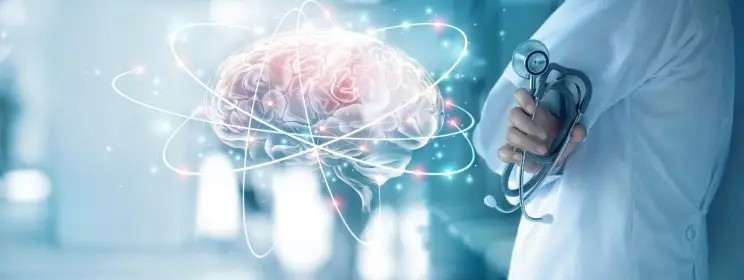There’s new hope for those who suffer from the debilitating condition of epilepsy. A minimally invasive procedure recently approved by the U.S. Food and Drug Administration (FDA) for treating Attention Deficit Hyperactivity Disorder (ADHD) in children holds promise for helping the 65 million people suffering from epilepsy. One of the neurosurgeons who helped evaluate this new treatment for the FDA is a member of the team of specialists at Texas Back Institute – Dr. Thomas Kosztowski.
Do you or a loved one suffer from epilepsy? Have you seen symptoms of this condition and are concerned about treatment? Schedule an appointment with Dr. Kosztowski or other neurosurgeons at Texas Back Institute.

In a previous post, another Texas Back Institute neurosurgeon, Dr. Akwasi Boah noted that “Epilepsy is a disorder where the cells of the brain, which are also known as neurons, are temporarily disrupted from their usual activities. This can result in many different kinds of seizures, some of which can include extreme convulsions where the patient’s arms and legs are violently shaking and eyes roll back. There are also more subtle variations of seizures, which can include repetitive movements, laughing spells, crying spells and other less-obvious actions.
“Over time, this condition has a cumulative cognitive effect. The more seizures a person experiences the greater the cognitive impact. It can also affect how normal neurologic functions are carried out. Walking, talking and “executive functions” – those skills that are the mental processes that enable us to plan, focus attention, remember instructions, and juggle multiple tasks successfully – are all affected by these seizures. In extreme cases, there is a risk of death.”
A New Nerve Stimulation Device is Approved by the FDA

A mild, non-pharmacological treatment option, called “Monarch® External Trigeminal Nerve Stimulation System” (eTNS®), has been approved by the FDA for children with ADHD. However, adults with epilepsy and other neurological diseases and injuries might also benefit. This treatment approach was previously approved for the treatment of epilepsy and depression in Europe and Canada.
In the United States, studies at the University of California, Los Angeles found the stimulation decreased seizure activity by inhibiting overactive neurons in one section of the brain, while stimulating blood flow in the areas that control mood, attention and executive function. This type of stimulation is also being tested for the possible treatment of traumatic brain injuries.
One Texas Back Institute Neurosurgeon Has Seen This Medical Device Before
Before joining the surgical team at Texas Back Institute, Dr. Thomas Kosztowski was a consultant for the FDA. In his role he participated with a team of experts that evaluated new treatments for neurological disorders. This new treatment device for ADHD was one that he helped to review. As such, he is an excellent source on its development.
“This treatment has been around for a few years, especially in Europe,” he said. “Recently, the manufacturer offered the product for review from the FDA for treatment of ADHD. They found that it does have some beneficial effects for patients.”
How Nerve Stimulation Works on the Brain
“This nerve stimulation technology is more than two decades old,” Dr. Kosztowski said. “We have used it for deep brain stimulation for such conditions as Parkinson’s disease and for spinal stimulation to alleviate back pain.
“Electrical stimulation on the nervous system can have two effects. It can stimulate the nerves to fire more, or it can depress this activity in nerves. Ultimately, nerves are similar to wires in that they are conducting electricity. They send and coordinate signals through the nervous system. When the electrical flow is modified in these ‘wires,’ it is possible to also modify different parts of the brain and spinal cord.”
New Treatment Gives Hope for Childhood and Adult Epilepsy Disorders
This procedure has been approved for the treatment of ADHD, which is usually diagnosed in children. However, some feel that it will be equally effective in helping adult disorders such as epilepsy. Is it common for a medical device to be designed and approved for one purpose and later found to be effective for something different?
“This occurs often,” Dr. Kosztowski said. “A good example of this is deep brain stimulators. Depending on what part of the brain these stimulators are placed, different functions and effects can occur. Deep brain stimulators were initially used for the treatment of Parkinson’s disease, but now they are also used for the treatment of depression and obsessive-compulsive disorder(OCD).”
The Rigorous Research of the FDA Continues
Is this treatment likely to be approved for other nervous disorders such as epilepsy in the future?
Dr. Kosztowsky concludes, “While I can’t speak for the FDA and the potential approval, my experience with working with this agency is that it has a very thorough, rigorous process of reviewing these devices and making sure that they are effective and as safe as possible.
“That being noted, as long as companies present conclusive data about the efficacy of any device or treatment and prove that it is both effective and safe, the agency does its best to push innovation forward. The primary objective is to ensure the best medical treatment for every patient in this country.”
Questions or concerns about any neurological or spine related pain or injury? Schedule an appointment with the world class experts at Texas Back Institute.




My husband was diagnosed of Parkinsons disease 2 years ago, when he was 49. He had a stooped posture, tremors, right arm does not move and also a pulsating feeling in his body. He was placed on Senemet for 8 months and then Sifrol was introduced and replaced the Senemet, during this time span he was also diagnosed with dementia. He started having hallucinations, lost touch with reality. Suspecting it was the medication I took him off the Siferol (with the doctor’s knowledge) and started him on PD-5 natural herbal formula we ordered from AKNNI HERBAL CENTRE, his symptoms totally declined over a 3 weeks use of the AKANNI HERBAL Parkinsons disease natural herbal formula. He is now almost 51 and doing very well, the disease is totally reversed!